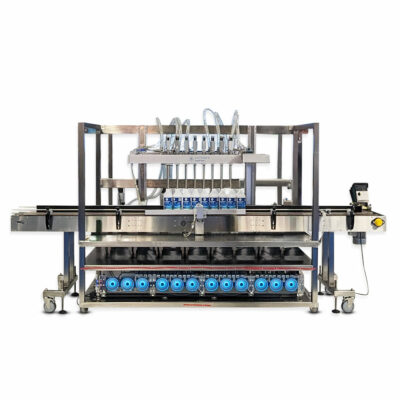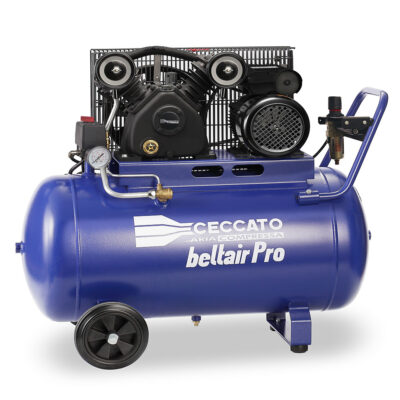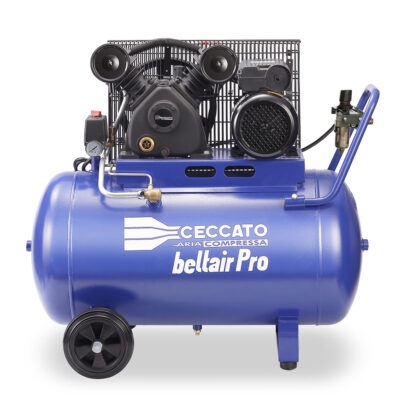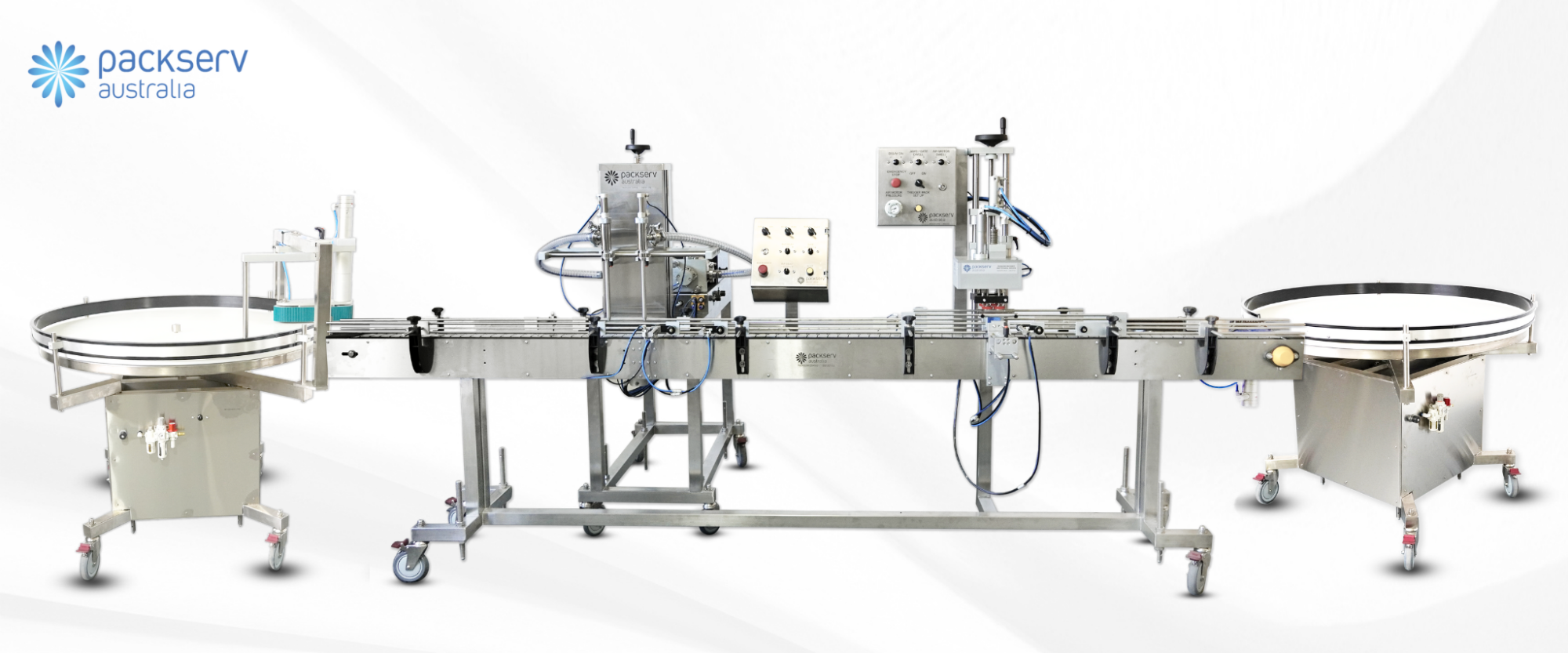With the development of PLC technology, HMI touch panel interfaces, complicated timing operations, integration with electrical actuators and processes, alarms, bells, whistles, pretty colours and flashing lights, compressed air has gone through a fairly difficult phase of being pushed to the side from a great deal of many packaging machines and applications, but in many facilities around the world compressed air remains firmly the drive of choice for many manufacturers still.
Nathan Wardell from Packserv writes: “We have designed, built, put together and installed quite a few fully pneumatic production lines and integrated dozens of purely pneumatic machines for clients this year”. For a manufacturer of products containing solvents and flammable liquids there isn’t an electrical option, the whole line has to be pneumatic from the container entry all the way until the products are outside the facility before any electrical device can be integrated into the line, without heavy, complicated and very expensive IP65 explosion proof enclosures and connections.
There seems to have been a trend of manufacturers over the last couple of years to digitalise machine operator interface’s, which in some cases has yielded advantageous results. Unfortunately a lot of manufacturers simply swapped their mechanical controls for digital buttons without adding any additional functionality behind them at all, no further automation, connectivity, data collation, safety, additional features… they simply swapped the button for a HMI panel input.. which while it looks really “cool” doesn’t do anything for the machine performance other than add a complication and a danger to the operator and fitter by adding electricity and unnecessary electrical components to complicate the inner workings of the equipment.
Many manufacturers involved in liquid filling and packaging require the convenience of wash down, ie: at the end of a production run an operator is able to take a hose and conduct a full wash down and clean of the equipment before it’s next run, another task prohibiting electrical devices in many cases. Wardell writes: “We recently had a client wanting a filling line at the higher end of the speed our fillers will run to, and in the end we again had to use pneumatic drive simply because all the actuators needed a faster travel speed to keep up with the process, so out went all the electrical actuators, PLC, power converters etc to make way for an upgraded pneumatic circuit. There have been a great deal of advancements in pneumatic control and air drive power in recent times too, not just electrical. Pneumatic components are so much more easily connectable and adaptable to different applications, the creation of valve islands has made the design, piping, and installation so much faster and easier for pneumatic technicians to install, test and fault find. A lot of these pneumatic components now have easy integration into hybrid systems too for example have an electrical controller attached… so it’s not a one way or the other type of scenario anymore, which is opening more options for designers and builders.
The quality of compressed air systems used to be a primary cause of the failure of pneumatic components in production lines, sometimes bringing entire facilities to a stand still, but the improvement of air compressors, filters, dryers, distribution systems and piping, have come just as far as any other technology, providing good quality clean, filtered, dry air that no longer fouls up pneumatic systems to the same degree, and the pneumatic components themselves have become much more robust and durable, not being as easily influenced by any amount of particles and moisture that used to bring them un-done in such regularity.
Pneumatics have come so far now, with valve islands, infinitely configurable, multi-process, shared supply, fewer airlines, and endless plug and play components… it really is like a big Meccano set for adults.. and once you understand the basic logic functions of the circuit, you can basically draw and build a brain to control any production system you like, even integrating communications between machines and processes on a singular line, yes… without any electronics.
Wardell: I suppose it’s the older technicians of us that love pneumatics so much, it’s just so simple and easy to use and fault find. It requires no real specialised equipment to work on, maybe a couple of test gauges are helpful for signal strength and cross overs, but for the most part it’s just a lot more relaxed taking something apart on a wet factory floor to find a fault when you aren’t at risk of getting electrocuted. And the components have come so far since those ID hose barb fittings that we all had to use in the 80’s and 90’s.
Don’t get us wrong, PLC technology and electric actuators are the state of the art weapons of choice for the cutting edge technologies and new machinery designs and functionality, a manufacturer in todays market has to have this in their arsenal as well as machinery is becoming more advanced and far more complicated, but it is an entirely different skill set, but it does open the door to so many new technologies… like AI, Ind 4.0, 5.0 robotics and cobotics, remote access, safety, data, management, but where and when to deploy this tech needs careful consideration, no point making something more complicated than it needs to be sometimes.




